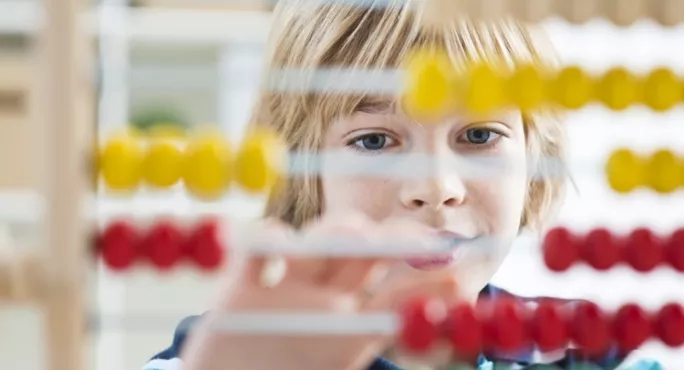Look around any maths classroom in a primary school. You often can’t see any equipment - my guess is that it is all hidden away at the back of an inaccessible cupboard somewhere. But if the equipment is out it is often only given to the pupils who are struggling. Those who are not struggling are assumed to be beyond the need of apparatus and then they themselves assume that using the “stuff” is a sign of weakness. However, this isn’t what should be happening in our classrooms.
Pupils who struggle in maths are not the only ones who can benefit from the support of the “stuff”. All pupils need opportunities to manipulate, experience and see the maths they are using. All pupils, regardless of perceived mathematical ability, sometimes need multiple representations of the task, to allow them to make links and connections between different areas of the subject and to progress in the increasingly reasoning- and problem-solving-based curriculum. Apparatus can help with all of this.
It is also not right to assume that only pupils in early years and key stage 1 need apparatus - like something happens to all pupils after their Year 2 tests, and the need to visualise, represent and compare disappears from the classroom. None of us should be afraid of getting out the apparatus. More practical methods will give pupils the understanding that will allow them to move on to more formal written methods as they move higher up the school.
Don’t hide the maths equipment
So, how should we use the apparatus? Firstly, we need to make sure that we get equipment out regularly. The class needs to be familiar with a tool before they can use it effectively. Providing a range of resources also allows the class to approach and explain each task in their own way. But they need to be familiar with equipment to be aware of its flexibility and the opportunities it provides.
As for what type of equipment to choose, it’s hard to pick out a small number of examples from all the apparatus that can be used in the primary classroom, but here are a few pieces that get the most mileage in my classroom:
- Multilink
Perhaps the most obvious piece of maths equipment. This has the potential to be used when dealing with all four of the operations and when working with number sequences, patterns, volume and algebra. And it can go in the dishwasher if needed!
- Cuisenaire rods
These coloured rods are newer to my classroom, but are just as flexible, adaptable and robust as multilink. They can be used for explaining and expressing algebra, representing number patterns, when using bar modelling, for addition and subtraction, demonstrating methods of division and for representing and measuring length.
- Dice
A flexible resource, mostly used for generating numbers. The nine-, 12- and 20-sided dice are a personal favourite.
- Fraction wheels/tiles/strips
Pupils who don’t fully understand fractions often find a fraction wall confusing, so providing one as a resource isn’t always helpful. Fraction resources that can be manipulated, stacked and potentially attached to magnetic whiteboards can be used at the very start when fractions are being introduced for the first time, right up to finding lowest common denominators and adding, subtracting and multiplying fractions at the top end of key stage 2. A combination of “pies”, towers and strips also show pupils that fractions can be represented in a variety of ways.
- A trolley
What would be the point in having all of these lovely resources if they are hidden at the back of a cupboard gathering dust? Visible, accessible resources - that you as a teacher model using - are the most useful within a classroom. And if they can be moved around on a stylish trolley, all the better.
Fiona Bethel is a Year 6 teacher. She tweets @fbet2335
Want to keep up with the latest education news and opinion? Follow Tes on Twitter and Instagram, and like Tes on Facebook.
